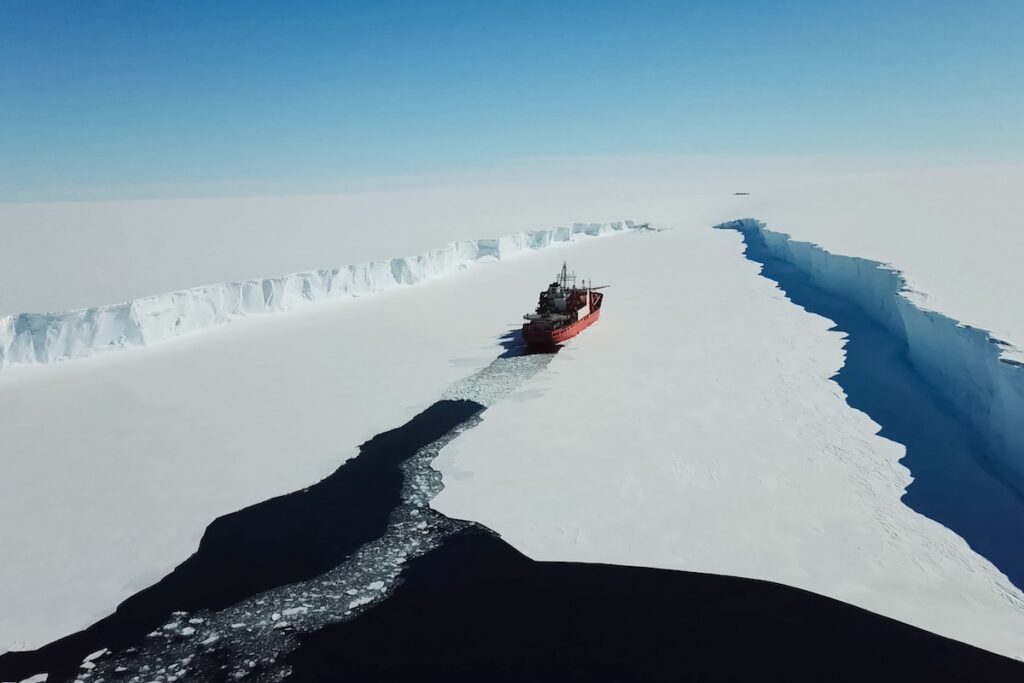How to Deal with a Major League Ice Hole
Globe and Mail
When a Russian icebreaker arrived at the North Pole a few weeks ago carrying a load of tourists, it found a mile-wide patch of ice-free water. It seemed like an astonishing development: indeed, reporter John Noble Wilford wrote in a front page story in the New York Times that “the last time scientists can be certain the pole was awash in water was more than 50 million years ago.” Here, it appeared, was bold evidence that global warming is finally upon us.
As it turns out, though, Wilford and the scientists he quoted were mistaken. Open water has appeared numerous times at the North Pole in recent decades, as a number of Canadian Arctic specialists later pointed out. The big story isn’t the discovery of open water at the pole – it’s that we can’t be sure what this open water means. Even the world’s foremost experts have a surprisingly limited understanding of the immense forces that shape climate and ocean currents in places like the Arctic, and they have an even weaker understanding of how human activities – like our emissions of carbon dioxide – are changing these forces.
Arctic experts agree on some things. First, the total area of Arctic sea ice has dropped significantly in recent decades: in the sixteen years between 1978 and 1994, about 5.5 percent of the Arctic’s ice-cover disappeared, an area the size of Texas. Second, and perhaps more alarmingly, the remaining ice has become much thinner: data from upward-looking sonar on U.S. submarines show that the ice has thinned from about ten feet to about six feet – a 40 percent drop – in the last twenty to forty years. And it appears that we’re losing a further foot of ice every three years.
But there the agreement among Arctic experts ends. Some of them believe that the data show a clear “signal” emerging from the “noise” of natural climate variation – a signal that points decisively to human-induced global warming. Others say that the trend of receding sea ice can be explained by natural processes, including strong westerly winds that, for decades at a time, sweep ice away from the Arctic ice pack into the North Atlantic.
The problem is that we just don’t know who is right, because we’re deeply ignorant of the workings of the complex environmental systems around us. Our ignorance means that we often don’t notice serious environmental problems when they first appear: the evidence can be right under our noses, but we don’t see it or, when we finally see it, we don’t interpret it correctly. Thus Arctic sea ice was thinning for decades before the trend was identified and documented.
Similarly, the Antarctic ozone hole started to appear in the mid-1970s, nearly ten years before scientists detected and explained it. When we finally realized what was happening over the South Pole, we learned that we had gained the power to disrupt environmental systems on a planetary scale. The great white North may be the next place where we see dramatic, deeply symbolic, evidence of this power. Extrapolating the current trend, it’s quite possible that within one or two decades the Arctic Ocean will erupt with vast swaths of open water. And because open water absorbs much more solar energy than ice (which, being white, is highly reflective), this change could throw out of kilter the energy balance for the entire northern part of the planet.
We are toying with awesome forces here – forces we barely understand. Given the potential costs to our societies if things go badly, we shouldn’t assume that natural processes will reverse the trends we see in the north. And common sense suggests we should be launching a crash research program to better understand what we are doing to Earth.

Topics
Climate Change
Energy
Environmental Stress and Conflict
